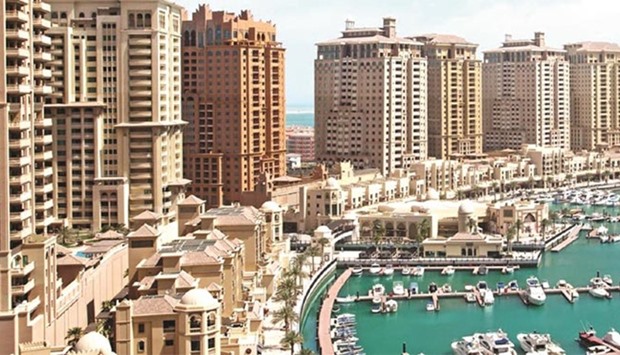Despite the backdrop of ongoing economic uncertainty and a sustained period of low oil pricing, residential rental levels in Qatar continued to expand unabated during 2015, rising by approximately 7% year-on-year, according to the ‘H2, 2015 Qatar MarketView’ by global real estate consultancy firm CBRE.
“Albeit, this was down from the 14% annual growth achieved during the same period in 2014. Rental rate growth during the second half of the year was around 5%, although growth in the final quarter was measured at just 1%. Smaller apartment units, particularly those within central locations, remained in high demand, although rental growth was actually most evident for secondary and more affordable locations,” said Mat Green, head (Research & Consulting UAE) CBRE Middle East.
“There has been increasing evidence of tenant relocations and downsizing, with some occupiers moving into smaller units or choosing more affordable accommodation in less prominent areas of the city,” added Green.
Housing options in locations such as Al Sadd, West Bay Lagoon and the Pearl-Qatar “continue to attract solid demand” from higher income groups of expatriates.
Typical monthly rents for one bedroom and two bedroom apartments in Al Sadd range from QR8,000 to QR14,000 a month, while West Bay Lagoon and Pearl-Qatar range from QR14,000 to QR20,000 a month, CBRE said.
From a total housing stock of roughly 180,000 units during 2010, Doha’s housing stock has grown to more than 226,500 units at the end of 2015, translating into about 5% annual growth rate.
The MarketView highlights that a significant majority (80%) of future supply will cater to upper mid–high income segments, with estimated rental levels in excess of QR7,500 a month, meaning a minimum household monthly income of around QR25,000 a month would be required.
On Qatar’s office market, the CBRE says the West Bay/Diplomatic area remains the primary choice for the majority of international and local office occupiers wishing to set up operations in the country.
In addition to comprising roughly 60% of the total office stock, proximity to quality residential, retail, hospitality and entertainment facilities make the wider West Bay area more appealing to tenants.
While West Bay will remain at the epicentre of the commercial office market in the short to medium term at least, the country is gravitating northwards amidst massive new construction works in locations such as Lusail.
“In terms of the future office supply pipeline, over 32% of all office space set to be completed over the next five years will be completed in the Lusail area, versus around 29% in West Bay,” said Green.
Prime rentals for Grade A office space remained steady during the second half of the year, with rates typically ranging from QR220 to QR280/m2 a month. In addition to the headline costs, the majority of commercial occupiers will also pay a service charge, which generally ranges between 10%-25% of the annual base rentals.
Although some new Grade A developments are starting to introduce an actual cost recovery method (example Doha Tower). More price-sensitive occupiers tend to congregate around the C/D Ring Roads, where rentals are more affordable, ranging from QR120-QR220/m2 a month.
A significant portion of all Grade A office supply in the West Bay area is occupied by the public sector and oil and gas related companies - two areas facing an increasingly uncertain outlook amidst challenging economic conditions.
“With current market conditions in mind, landlords are also becoming more flexible and realistic in their leasing approach, with more acceptance towards accommodating demand for smaller office space, rather than only accepting the rental of whole floors, or whole buildings to Government related entities,” Green added.
The CBRE report also highlights that according to figures released by the Qatar Tourism Authority (QTA), total foreign visitors to the country reached 2.93mn during 2015, roughly 3.7% annual growth over the same period in 2014.

Housing options in areas such as Pearl-Qatar u201cattract solid demandu201d
